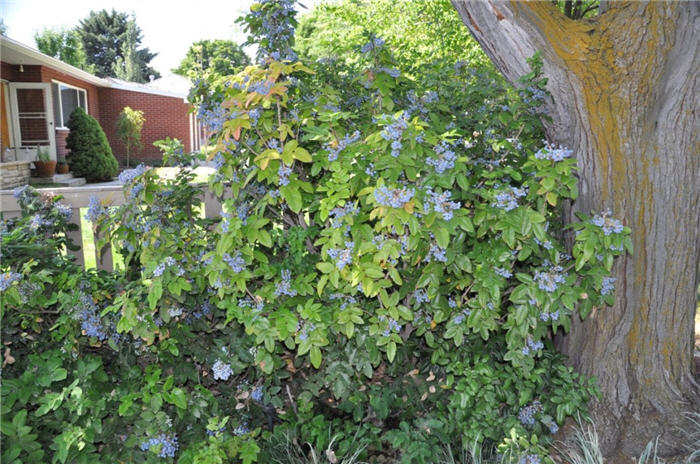| Botanical Name: Mahonia aquifolium | |
| Common Name: Oregon Grape |

-
Anatomy
-
Culture
-
Design
Plant Type
Broadleaf Evergreen, Shrub
Height Range
6-12'
Flower Color
Yellow
Flower Season
Spring
Leaf Color
Bronze, Dark Green
Bark Color
Grey
Fruit Color
Blue
Fruit Season
Summer, Fall
Sun
Half, Shade
Water
Low, Medium
Growth Rate
Moderate
Soil Type
Clay, Loam
Soil Condition
Average, Rich, Well-drained
Soil pH
Neutral, Basic
Adverse Factors
Invasive, Thorns/Spines
Design Styles
Formal, Mediterranean, Ranch, Woodland
Accenting Features
Fragrance, Showy Flowers, Unusual Foliage
Seasonal Interest
Winter, Spring, Summer, Fall
Location Uses
Background, Shrub Border, Foundation, Walls / Fences
Special Uses
Erosion Control, Hedge, Screen, Mass Planting, Fire Resistant
Attracts Wildlife
Birds
Information by: Stephanie Duer
Photographer: Jerry Sortomme SBCC
Photographer: Jerry Sortomme SBCC
-
Description
-
Notes
Oregon grape is a large, densely branched, rounded evergreen shrub growing 8 to 10 feet tall and wide. Holly-like leaves emerge a bronzy red and mature to a glossy green; they have spiny barbs making it a good choice as a barrier. Even though it is evergreen, foliage turns a lovely purple-bronze in the fall. Clusters of fragrant yellow flowers appear April to May, and are followed by fruit that ripens from green to blue-black in late summer. 'Compacta' is a dwarf form growing between 3 and 4 feet tall and wide.
Grow in well drained soil and part to full shade. When planted in full sun, it invariably experiences scorch by mid-summer. Prefers soils high in organic content. Once established it requires only periodic watering. Spreads by stolons and can form a colony; a useful trait if placed appropriately.